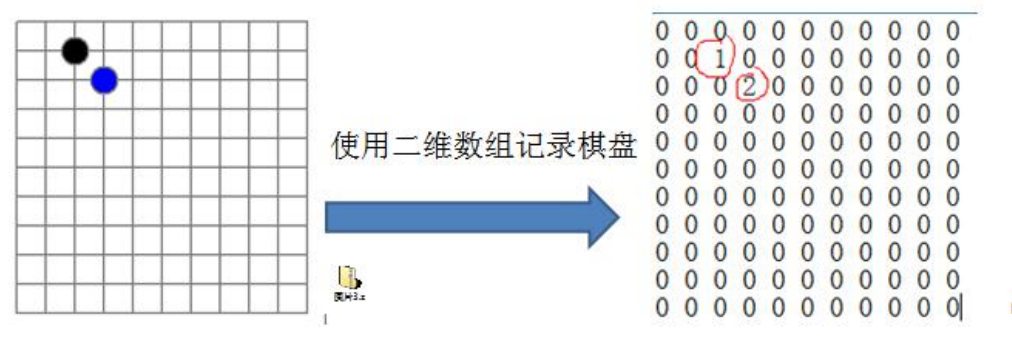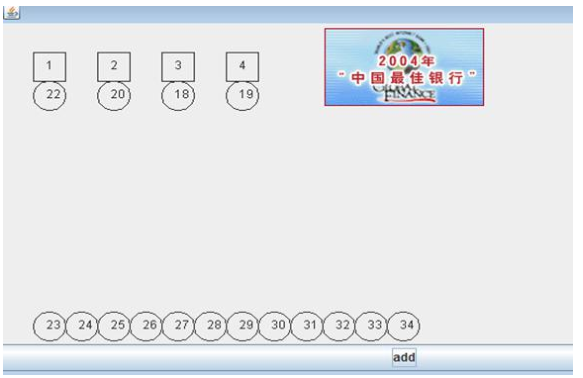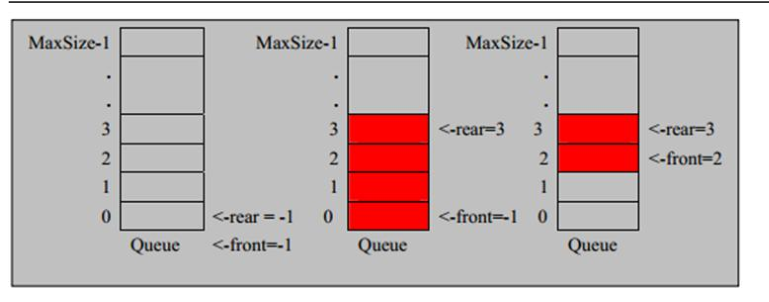第 3 章 稀疏数组和队列
3.1 稀疏 sparsearray 数组
3.1.1先看一个实际的需求
编写的五子棋程序中,有存盘退出和续上盘的功能。

分析问题:
因为该二维数组的很多值是默认值 0, 因此记录了 很多没有意义的数据.-> 稀疏数组。
3.1.2基本介绍
当一个数组中大部分元素为0,或者为同一个值的数组时,可以使用稀疏数组来保存该数组。
稀疏数组的处理方法是:
1) 记录数组 一共有几行几列,有多少个不同的值
2) 把具有不同值的元素的行列及值记录在一个小规模的数组中,从而 缩小程序的规模
稀疏数组举例说明

3.1.3应用实例
1) 使用稀疏数组,来保留类似前面的二维数组(棋盘、地图等等)
2) 把稀疏数组存盘,并且可以从新恢复原来的二维数组数
3) 整体思路分析

4) 代码实现
package com.atguigu.sparsearray;
public class SparseArray {
public static void main(String[] args) {
// 创建一个原始的二维数组 11 * 11
// 0: 表示没有棋子, 1 表示 黑子 2 表蓝子
int chessArr1[][] = new int[11][11];
chessArr1[1][2] = 1;
chessArr1[2][3] = 2;
chessArr1[4][5] = 2;
// 输出原始的二维数组
System.out.println("原始的二维数组~~");
for (int[] row : chessArr1) {
for (int data : row) {
System.out.printf("%d\t", data);
}
System.out.println();
}
// 将二维数组 转 稀疏数组的思
// 1. 先遍历二维数组 得到非0数据的个数
int sum = 0;
for (int i = 0; i < 11; i++) {
for (int j = 0; j < 11; j++) {
if (chessArr1[i][j] != 0) {
sum++;
}
}
}
// 2. 创建对应的稀疏数组
int sparseArr[][] = new int[sum + 1][3];
// 给稀疏数组赋值
sparseArr[0][0] = 11;
sparseArr[0][1] = 11;
sparseArr[0][2] = sum;
// 遍历二维数组,将非0的值存放到 sparseArr中
int count = 0; //count 用于记录是第几个非0数据
for (int i = 0; i < 11; i++) {
for (int j = 0; j < 11; j++) {
if (chessArr1[i][j] != 0) {
count++;
sparseArr[count][0] = i;
sparseArr[count][1] = j;
sparseArr[count][2] = chessArr1[i][j];
}
}
}
// 输出稀疏数组的形式
System.out.println();
System.out.println("得到稀疏数组为~~~~");
for (int i = 0; i < sparseArr.length; i++) {
System.out.printf("%d\t%d\t%d\t\n", sparseArr[i][0], sparseArr[i][1], sparseArr[i][2]);
}
System.out.println();
//将稀疏数组 --》 恢复成 原始的二维数组
/*
* 1. 先读取稀疏数组的第一行,根据第一行的数据,创建原始的二维数组,比如上面的 chessArr2 = int [11][11]
2. 在读取稀疏数组后几行的数据,并赋给 原始的二维数组 即可.
*/
//1. 先读取稀疏数组的第一行,根据第一行的数据,创建原始的二维数组
int chessArr2[][] = new int[sparseArr[0][0]][sparseArr[0][1]];
//2. 在读取稀疏数组后几行的数据(从第二行开始),并赋给 原始的二维数组 即可
for(int i = 1; i < sparseArr.length; i++) {
chessArr2[sparseArr[i][0]][sparseArr[i][1]] = sparseArr[i][2];
}
// 输出恢复后的二维数组
System.out.println();
System.out.println("恢复后的二维数组");
for (int[] row : chessArr2) {
for (int data : row) {
System.out.printf("%d\t", data);
}
System.out.println();
}
}
}
3.1.4课后练习
要求:
1) 在前面的基础上,将稀疏数组保存到磁盘上,比如 map.data
2) 恢复原来的数组时,读取 map.data 进行恢复
3.2 队列
3.2.1队列的一个使用场景
银行排队的案例:

3.2.2队列介绍
1) 队列是一个 有序列表,可以用 数组或是 链表来实现。
2) 遵循 先入先出的原则。即: 先存入队列的数据,要先取出。后存入的要后取出
3) 示意图:(使用数组模拟队列示意图)

3.2.3数组模拟队列思路
队列本身是有序列表,若使用数组的结构来存储队列的数据,则队列数组的声明如下图, 其中 maxSize 是该队
列的最大容量。
因为队列的输出、输入是分别从前后端来处理,因此需要两个变量 front 及 rear 分别记录队列前后端的下标,
front 会随着数据输出而改变,而 rear 则是随着数据输入而改变,如图所示:

当我们将数据存入队列时称为”addQueue”,addQueue 的处理需要有两个步骤:思路分析
1) 将尾指针往后移:rear+1 , 当 front == rear 【空】
2) 若尾指针 rear 小于队列的最大下标 maxSize-1,则将数据存入 rear 所指的数组元素中,否则无法存入数据。
rear == maxSize - 1[队列满]
代码实现
package com.atguigu.queue;
import java.util.Scanner;
public class ArrayQueueDemo {
public static void main(String[] args) {
//测试一把
//创建一个队列
ArrayQueue queue = new ArrayQueue(3);
char key = ' '; //接收用户输入
Scanner scanner = new Scanner(System.in);//
boolean loop = true;
//输出一个菜单
while(loop) {
System.out.println("s(show): 显示队列");
System.out.println("e(exit): 退出程序");
System.out.println("a(add): 添加数据到队列");
System.out.println("g(get): 从队列取出数据");
System.out.println("h(head): 查看队列头的数据");
key = scanner.next().charAt(0);//接收一个字符
switch (key) {
case 's':
queue.showQueue();
break;
case 'a':
System.out.println("输出一个数");
int value = scanner.nextInt();
queue.addQueue(value);
break;
case 'g': //取出数据
try {
int res = queue.getQueue();
System.out.printf("取出的数据是%d\n", res);
} catch (Exception e) {
// TODO: handle exception
System.out.println(e.getMessage());
}
break;
case 'h': //查看队列头的数据
try {
int res = queue.headQueue();
System.out.printf("队列头的数据是%d\n", res);
} catch (Exception e) {
// TODO: handle exception
System.out.println(e.getMessage());
}
break;
case 'e': //退出
scanner.close();
loop = false;
break;
default:
break;
}
}
System.out.println("程序退出~~");
}
}
// 使用数组模拟队列-编写一个ArrayQueue类
class ArrayQueue {
private int maxSize; // 表示数组的最大容量
private int front; // 队列头
private int rear; // 队列尾
private int[] arr; // 该数据用于存放数据, 模拟队列
// 创建队列的构造器
public ArrayQueue(int arrMaxSize) {
maxSize = arrMaxSize;
arr = new int[maxSize];
front = -1; // 指向队列头部,分析出front是指向队列头的前一个位置.
rear = -1; // 指向队列尾,指向队列尾的数据(即就是队列最后一个数据)
}
// 判断队列是否满
public boolean isFull() {
return rear == maxSize - 1;
}
// 判断队列是否为空
public boolean isEmpty() {
return rear == front;
}
// 添加数据到队列
public void addQueue(int n) {
// 判断队列是否满
if (isFull()) {
System.out.println("队列满,不能加入数据~");
return;
}
rear++; // 让rear 后移
arr[rear] = n;
}
// 获取队列的数据, 出队列
public int getQueue() {
// 判断队列是否空
if (isEmpty()) {
// 通过抛出异常
throw new RuntimeException("队列空,不能取数据");
}
front++; // front后移
return arr[front];
}
// 显示队列的所有数据
public void showQueue() {
// 遍历
if (isEmpty()) {
System.out.println("队列空的,没有数据~~");
return;
}
for (int i = 0; i < arr.length; i++) {
System.out.printf("arr[%d]=%d\n", i, arr[i]);
}
}
// 显示队列的头数据, 注意不是取出数据
public int headQueue() {
// 判断
if (isEmpty()) {
throw new RuntimeException("队列空的,没有数据~~");
}
return arr[front + 1];
}
}
问题分析并优化
1) 目前数组使用一次就不能用, 没有达到复用的效果
2) 将这个数组使用算法,改进成一个列 环形的队列 取模:%
3.2.4数组模拟环形队列
对前面的数组模拟队列的优化,充分利用数组. 因此将数组看做是一个环形的。(通过 取模的方式来实现即可)
分析说明:
1) 尾索引的下一个为头索引时表示队列满,即将队列容量空出一个作为约定,这个在做判断队列满的
时候需要注意 (rear + 1) % maxSize == front 满]
2) rear == front [空]
3) 分析示意图:

package com.atguigu.queue;
import java.util.Scanner;
public class CircleArrayQueueDemo {
public static void main(String[] args) {
//测试一把
System.out.println("测试数组模拟环形队列的案例~~~");
// 创建一个环形队列
CircleArray queue = new CircleArray(4); //说明设置4, 其队列的有效数据最大是3
char key = ' '; // 接收用户输入
Scanner scanner = new Scanner(System.in);//
boolean loop = true;
// 输出一个菜单
while (loop) {
System.out.println("s(show): 显示队列");
System.out.println("e(exit): 退出程序");
System.out.println("a(add): 添加数据到队列");
System.out.println("g(get): 从队列取出数据");
System.out.println("h(head): 查看队列头的数据");
key = scanner.next().charAt(0);// 接收一个字符
switch (key) {
case 's':
queue.showQueue();
break;
case 'a':
System.out.println("输出一个数");
int value = scanner.nextInt();
queue.addQueue(value);
break;
case 'g': // 取出数据
try {
int res = queue.getQueue();
System.out.printf("取出的数据是%d\n", res);
} catch (Exception e) {
// TODO: handle exception
System.out.println(e.getMessage());
}
break;
case 'h': // 查看队列头的数据
try {
int res = queue.headQueue();
System.out.printf("队列头的数据是%d\n", res);
} catch (Exception e) {
// TODO: handle exception
System.out.println(e.getMessage());
}
break;
case 'e': // 退出
scanner.close();
loop = false;
break;
default:
break;
}
}
System.out.println("程序退出~~");
}
}
class CircleArray {
private int maxSize; // 表示数组的最大容量
//front 变量的含义做一个调整: front 就指向队列的第一个元素, 也就是说 arr[front] 就是队列的第一个元素
//front 的初始值 = 0
private int front;
//rear 变量的含义做一个调整:rear 指向队列的最后一个元素的后一个位置. 因为希望空出一个空间做为约定.
//rear 的初始值 = 0
private int rear; // 队列尾
private int[] arr; // 该数据用于存放数据, 模拟队列
public CircleArray(int arrMaxSize) {
maxSize = arrMaxSize;
arr = new int[maxSize];
}
// 判断队列是否满
public boolean isFull() {
return (rear + 1) % maxSize == front;
}
// 判断队列是否为空
public boolean isEmpty() {
return rear == front;
}
// 添加数据到队列
public void addQueue(int n) {
// 判断队列是否满
if (isFull()) {
System.out.println("队列满,不能加入数据~");
return;
}
//直接将数据加入
arr[rear] = n;
//将 rear 后移, 这里必须考虑取模
rear = (rear + 1) % maxSize;
}
// 获取队列的数据, 出队列
public int getQueue() {
// 判断队列是否空
if (isEmpty()) {
// 通过抛出异常
throw new RuntimeException("队列空,不能取数据");
}
// 这里需要分析出 front是指向队列的第一个元素
// 1. 先把 front 对应的值保留到一个临时变量
// 2. 将 front 后移, 考虑取模
// 3. 将临时保存的变量返回
int value = arr[front];
front = (front + 1) % maxSize;
return value;
}
// 显示队列的所有数据
public void showQueue() {
// 遍历
if (isEmpty()) {
System.out.println("队列空的,没有数据~~");
return;
}
// 思路:从front开始遍历,遍历多少个元素
// 动脑筋
for (int i = front; i < front + size() ; i++) {
System.out.printf("arr[%d]=%d\n", i % maxSize, arr[i % maxSize]);
}
}
// 求出当前队列有效数据的个数
public int size() {
// rear = 2
// front = 1
// maxSize = 3
return (rear + maxSize - front) % maxSize;
}
// 显示队列的头数据, 注意不是取出数据
public int headQueue() {
// 判断
if (isEmpty()) {
throw new RuntimeException("队列空的,没有数据~~");
}
return arr[front];
}
}
package com.atguigu.queue;
import java.util.Scanner;
public class CircleArrayQueueDemo {
public static void main(String[] args) {//测试一把System.out.println("测试数组模拟环形队列的案例~~~");// 创建一个环形队列CircleArray queue = new CircleArray(4); //说明设置4, 其队列的有效数据最大是3char key = ' '; // 接收用户输入Scanner scanner = new Scanner(System.in);//boolean loop = true;// 输出一个菜单while (loop) {System.out.println("s(show): 显示队列");System.out.println("e(exit): 退出程序");System.out.println("a(add): 添加数据到队列");System.out.println("g(get): 从队列取出数据");System.out.println("h(head): 查看队列头的数据");key = scanner.next().charAt(0);// 接收一个字符switch (key) {case 's':queue.showQueue();break;case 'a':System.out.println("输出一个数");int value = scanner.nextInt();queue.addQueue(value);break;case 'g': // 取出数据try {int res = queue.getQueue();System.out.printf("取出的数据是%d\n", res);} catch (Exception e) {// TODO: handle exceptionSystem.out.println(e.getMessage());}break;case 'h': // 查看队列头的数据try {int res = queue.headQueue();System.out.printf("队列头的数据是%d\n", res);} catch (Exception e) {// TODO: handle exceptionSystem.out.println(e.getMessage());}break;case 'e': // 退出scanner.close();loop = false;break;default:break;}}System.out.println("程序退出~~");}
}
class CircleArray {private int maxSize; // 表示数组的最大容量//front 变量的含义做一个调整: front 就指向队列的第一个元素, 也就是说 arr[front] 就是队列的第一个元素 //front 的初始值 = 0private int front; //rear 变量的含义做一个调整:rear 指向队列的最后一个元素的后一个位置. 因为希望空出一个空间做为约定.//rear 的初始值 = 0private int rear; // 队列尾private int[] arr; // 该数据用于存放数据, 模拟队列public CircleArray(int arrMaxSize) {maxSize = arrMaxSize;arr = new int[maxSize];}// 判断队列是否满public boolean isFull() {return (rear + 1) % maxSize == front;}// 判断队列是否为空public boolean isEmpty() {return rear == front;}// 添加数据到队列public void addQueue(int n) {// 判断队列是否满if (isFull()) {System.out.println("队列满,不能加入数据~");return;}//直接将数据加入arr[rear] = n;//将 rear 后移, 这里必须考虑取模rear = (rear + 1) % maxSize;}// 获取队列的数据, 出队列public int getQueue() {// 判断队列是否空if (isEmpty()) {// 通过抛出异常throw new RuntimeException("队列空,不能取数据");}// 这里需要分析出 front是指向队列的第一个元素// 1. 先把 front 对应的值保留到一个临时变量// 2. 将 front 后移, 考虑取模// 3. 将临时保存的变量返回int value = arr[front];front = (front + 1) % maxSize;return value;
}// 显示队列的所有数据public void showQueue() {// 遍历if (isEmpty()) {System.out.println("队列空的,没有数据~~");return;}// 思路:从front开始遍历,遍历多少个元素// 动脑筋for (int i = front; i < front + size() ; i++) {System.out.printf("arr[%d]=%d\n", i % maxSize, arr[i % maxSize]);}}// 求出当前队列有效数据的个数public int size() {// rear = 2// front = 1// maxSize = 3 return (rear + maxSize - front) % maxSize; }// 显示队列的头数据, 注意不是取出数据public int headQueue() {// 判断if (isEmpty()) {throw new RuntimeException("队列空的,没有数据~~");}return arr[front];}}
本文来自博客园,作者:极地阳光-ing,转载请注明原文链接:https://www.cnblogs.com/Polar-sunshine/p/13611388.html




